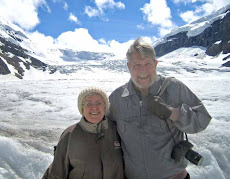“Alcatraz rocks!“ was the comment from one of the children on our
tour boat. We were headed to Alcatraz—the former federal prison and now
national park—for a tour of the facility and island. The boat ride is
the only way to get there. We departed from the San Francisco wharf next
to the infamous Pier 39—itself, a major tourist destination. Alcatraz
was made a part of the Golden Gate National Recreational Area in 1972.
The National Park Service (NPS) operates the facility.

Infamously
known as “The Rock,“ Alcatraz was the ultimate destination for
prisoners deemed incorrigible or a troublemaker. A few prisoners whose
names you may recognize include Al Capone, Alvin Karpis, George
“Machine Gun“ Kelly, and Robert Stroud, the “Birdman of Alcatraz.“
After
stepping off the boat, the walking tour of Alcatraz is at your own
pace. Numerous departure times for the return boat are posted so you can
stay on the island as long as you want. There is a steep walk (12%
grade) up to the main Cellhouse building and a tram is available for
those unable to make the climb.
An audio tour is the
recommended way to hear the information. You get a comfortable set of
earphones and a simple-to-operate player that allows you to stop the
narrative at any time, replay when needed, and there are clear
directions pointing you to the next point of interest. The information
is excellent and the stories and comments by former prisoners are
interesting.
Alcatraz was a real prison specially designed to hold some of the toughest and meanest prisoners this nation had

incarcerated
at that time. The tour walks you through the cell blocks where you have
a close-up view of the real cells where prisoners lived.

During
the tour, viewing the individual cells, “segregation,“ and
“isolation“ is an eye-opening experience. Rule Number 5, Alcatraz Prison
Rules and Regulations, 1934, stated that, “You are entitled to food,
clothing, shelter, and medical attention. Anything else you get is a
privilege.“
When a prisoner was placed in
“segregation,“ it was not considered additional punishment. This move
was designed to simply separate prisoners and prevent contact.
Interestingly, the “segregation “ cell is actually larger than the
normal cell.
Special cells called “Isolation“ were
designed for the highest level of punishment. Inmates referred to the
isolation cells as the “Hole.“ When the outer door to the cell was
closed, the interior of the cell was in total darkness. Listening to the
audio tour, one prisoner described his time in isolation as follows…
"He
stated that to pass the time and keep from going crazy, he would rip a
button off his clothes, then flip that button up in the air, he would
turn around three times, and then search the floor for the button—by
feel—by crawling around. Simply, it gave him something he could do in
total darkness."



Prisoners were kept in the isolation cell 23 hours per day. This punishment was, in effect, the total loss of all privileges.
Visitation
with the immediate family was also a privilege (remember Rule #5) and,
as with all activities (privileges), was regulated by a set of rigid
rules. These visitation rules were designed to control the visitation
and prevent potential problems. The inmate and his visitor were
separated by a window of thick glass and conversation was by phone. All
conversations were monitored.
Occasionally, prisoners
would be able to see across the bay. There, San Francisco beckoned them.
One Alcatraz myth is that it is impossible to survive the swim to the
mainland because of sharks. However, there are no “man-eating” sharks in
San Francisco Bay. The cold water (averaging 50–55 degrees), strong
currents, and 1-1/4 miles to shore were excellent deterrents.

In
1934, prior opening Alcztraz, a teenage girl swam to the island to
prove it was possible. The fitness guru Jack LaLanne once swam to the
island pulling a rowboat, and two 10-year-old children also made the
swim.
Thirty-six men (two who tried twice) were
involved in fourteen escape attempts from 1934–1963. Twenty-three were
caught, six shot and killed, and two drowned. Officially, no prisoners
succeeded in escaping from Alcatraz, however, five prisoners are listed
as “missing and presumed drowned.“
Frank Morris, with
John and Clarence Anglin (brothers ) escaped from their cells and never
seen again. Another inmate, Allen West, believed to have been the
mastermind, was involved but was still in his cell the next morning
after the escape. “Escape from Alcatraz,” the movie starring Clint
Eastwood as Frank Morris, was the story of this escape. The men used
prison-issue raincoats to make crude life vests and a pontoon-type raft
to help them survive the swim. The three men were never found.









































